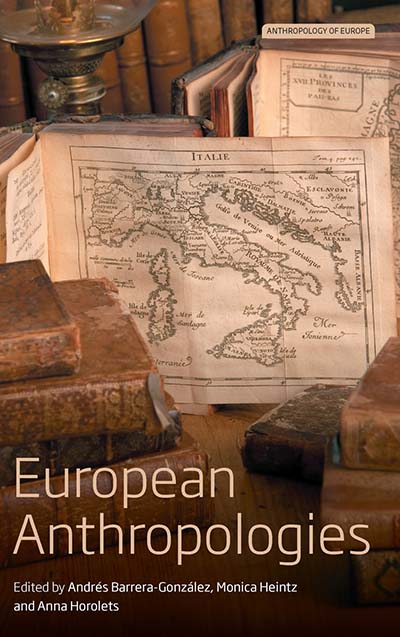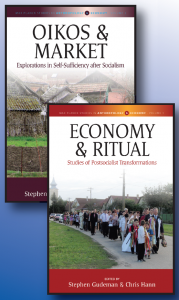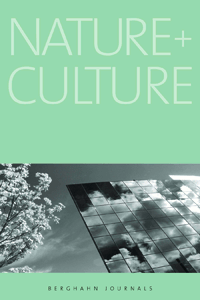The following is an interview with Martin Holbraad, editor of the journal Social Analysis: The International Journal of Social and Cultural Practice.
Continue reading “Interview with Martin Holbraad on becoming editor of Social Analysis”

Continue reading “Interview with Martin Holbraad on becoming editor of Social Analysis”
 The following is an interview with Andrés Barrera-González, Monica Heintz and Anna Horolets (editors of European Anthropologies which was recently published by Berghahn). Andrés Barrera-González is tenured Profesor Titular in Social Anthropology at Universidad Complutense, Madrid. Monica Heintz (PhD Cambridge 2002) is Associate Professor in Social Anthropology at the University of Paris Nanterre. Anna Horolets is an Associate Professor at the Chair of Social Anthropology, University of Gdańsk.
The following is an interview with Andrés Barrera-González, Monica Heintz and Anna Horolets (editors of European Anthropologies which was recently published by Berghahn). Andrés Barrera-González is tenured Profesor Titular in Social Anthropology at Universidad Complutense, Madrid. Monica Heintz (PhD Cambridge 2002) is Associate Professor in Social Anthropology at the University of Paris Nanterre. Anna Horolets is an Associate Professor at the Chair of Social Anthropology, University of Gdańsk.Continue reading “Interview with the Editors: European Anthropologies ”
 Stephen Gudeman is a Series Editor for Berghahn’s Max Planck Studies in Anthropology and Economy Series. Below, he answers our questions about his work.
Stephen Gudeman is a Series Editor for Berghahn’s Max Planck Studies in Anthropology and Economy Series. Below, he answers our questions about his work.
Working with Chris Hann, you have started a new Series with Berghahn Books exploring the connection between economics and anthropology: Max Planck Studies in Anthropology and Economy. Can you explain what we may learn covering this ground? How can anthropology help the study of economics, which is generally a quantitative discipline?
Continue reading “Between Anthropology and Economy: an Interview with Stephen Gudeman”
 This post is the transcript of an electronic interview between D. S. Farrer and Željko Jokić. Farrer is the special issue editor for Social Analysis Volume 58, Issue 1, and Jokić is the author of the article “Shamanic Battleground: Magic, Sorcery, and Warrior Shamanism in Venezuela” appearing in that issue. Below, Jokić answers a series of questions related to her article in Social Analysis.
This post is the transcript of an electronic interview between D. S. Farrer and Željko Jokić. Farrer is the special issue editor for Social Analysis Volume 58, Issue 1, and Jokić is the author of the article “Shamanic Battleground: Magic, Sorcery, and Warrior Shamanism in Venezuela” appearing in that issue. Below, Jokić answers a series of questions related to her article in Social Analysis.
This is the eighth in a series of interviews with contributors to this volume. Find the previous contributions on our blog.
Continue reading “Željko Jokić: Researching Assault Sorcery”
 This post is the transcript of an electronic interview between D. S. Farrer and Michael Roberts. Farrer is the special issue editor for Social Analysis Volume 58, Issue 1, and Roberts is the author of the article “Encompassing Empowerment in Ritual, War, and Assassination: Tantric Principles in Tamil Tiger Instrumentalities” appearing in that issue. Below, Roberts answers a series of questions related to her article in Social Analysis.
This post is the transcript of an electronic interview between D. S. Farrer and Michael Roberts. Farrer is the special issue editor for Social Analysis Volume 58, Issue 1, and Roberts is the author of the article “Encompassing Empowerment in Ritual, War, and Assassination: Tantric Principles in Tamil Tiger Instrumentalities” appearing in that issue. Below, Roberts answers a series of questions related to her article in Social Analysis.
This is the seventh in a series of interviews with contributors to this volume. Find the previous contributions on our blog.
Continue reading “Nationalism, Communal Violence, and Tamil Tiger Devotion”
 This post is the transcript of an electronic interview between D. S. Farrer and J. David Neidel. Farrer is the special issue editor for Social Analysis Volume 58, Issue 1, and Neidel is the author of the article “Discourse of Decline: Local Perspectives on Magic in Highland Jambi, Indonesia” appearing in that issue. Below, Neidel answers a series of questions related to her article in Social Analysis.
This post is the transcript of an electronic interview between D. S. Farrer and J. David Neidel. Farrer is the special issue editor for Social Analysis Volume 58, Issue 1, and Neidel is the author of the article “Discourse of Decline: Local Perspectives on Magic in Highland Jambi, Indonesia” appearing in that issue. Below, Neidel answers a series of questions related to her article in Social Analysis.
This is the sixth in a series of interviews with contributors to this volume. Find the previous contributions on our blog.
What drew you to the study of War Magic & Warrior Religion?
I conducted research for my Ph.D. dissertation in the highlands of Sumatra, Indonesia. My research project focused on a national park- community conflict, so I was not intending to study war magic. Supernatural powers, spirit possession, and other related phenomena, however, played such a large role in the local culture (as seen in legends, oral histories, village ceremonies, and actual practice) that I started collecting data on the subject as a side project.
Continue reading “Supernatural Powers and a “Discourse of Decline””
 This post is the transcript of an electronic interview between D. S. Farrer and James D. Sellmann. Farrer is the special issue editor for Social Analysis Volume 58, Issue 1, and Sellmann is the co-author of the article “Chants of Re-enchantment: Chamorro Spiritual Resistance to Colonial Domination“ appearing in that issue. Below, Sellmann answers a series of questions related to his article in Social Analysis.
This post is the transcript of an electronic interview between D. S. Farrer and James D. Sellmann. Farrer is the special issue editor for Social Analysis Volume 58, Issue 1, and Sellmann is the co-author of the article “Chants of Re-enchantment: Chamorro Spiritual Resistance to Colonial Domination“ appearing in that issue. Below, Sellmann answers a series of questions related to his article in Social Analysis.
This is the fifth in a series of interviews with contributors to this volume. Find the previous contributions on our blog.
Continue reading “James D. Sellmann: Thoughts on Magic-Religion”
 This post is the transcript of an electronic interview between D. S. Farrer and Margaret Chan. Farrer is the special issue editor for Social Analysis Volume 58, Issue 1, and Chan is the author of the article “Tangki War Magic The Virtuality of Spirit Warfare and the Actuality of Peace,” appearing in that issue. Below, Chan answers a series of questions related to her article in Social Analysis.
This post is the transcript of an electronic interview between D. S. Farrer and Margaret Chan. Farrer is the special issue editor for Social Analysis Volume 58, Issue 1, and Chan is the author of the article “Tangki War Magic The Virtuality of Spirit Warfare and the Actuality of Peace,” appearing in that issue. Below, Chan answers a series of questions related to her article in Social Analysis.
This is the fourth in a series of interviews with contributors to this volume. Find the previous contributions on our blog.
Continue reading “Margaret Chan: Understanding the Chinese Warrior-Defender of Boundaries”
 Below is an electronic interview between the Berghahn blog editor and Annina Schneller, contributor to the latest issue of the journal Nature and Culture. Annina Schneller is a contributor to the article titled “Design Rhetoric: Studying the Effects of Designed Objects” which appears in Volume 10, Number 3.
Below is an electronic interview between the Berghahn blog editor and Annina Schneller, contributor to the latest issue of the journal Nature and Culture. Annina Schneller is a contributor to the article titled “Design Rhetoric: Studying the Effects of Designed Objects” which appears in Volume 10, Number 3.
Annina Schneller, how come a philosopher does research about design?
Philosophy is a highly theoretical science and I always felt a lack of sensuality, a detachment from real experience and the problems we encounter in everyday life. I am interested in the practical aspects of ordinary life and in grasping‚ the bigger picture’, which also means to transcend disciplinary borders. In my research, conceptual, theoretical questions merge with practice-based questions of creation and effect in design.
You are following a rhetorical approach to design. What does that mean?
In analogy to rhetorics – the art of speech – I try to define a system that enables us to analyse design, but also to instruct designers for practice. Both rhetoric and design are intrinsically effect oriented. Their success lies in creating a certain reaction in a public. In my research, I try to find out which elements of design – colour, shape, material, composition etc. – are apt to create effects in the beholder or user and how this interrelation can be purposefully shaped. My article in Nature and Culture presents a design rhetorical view by referring to different practice-based research projects I have been working on. I particularly focus on the methodological problems that have occurred in identifying design effects and pinning down design rules.
How does this kind of design research link to the issues of Nature and Culture?
The impact of design is of concern for cultural studies, since design objects constitute a large part of human culture. Most of the things that surround us, we work with, we enjoy or that stand in our way are products of design. The boundary between natural and artificial objects can be questioned by reference to design: Many of the seemingly natural things such as plants or rivers can nowadays be seen as infiltrated by human design endeavours. So, if the apple in the supermarket has been designed to look fresh and crisp, does it belong to nature or culture now?
 This post is the transcript of an electronic interview between D. S. Farrer and Iain Sinclair. Farrer is the special issue editor for Social Analysis Volume 58, Issue 1, and Sinclair is the author of the article War Magic and Just War in Indian Tantric Buddhism appearing in that issue. Below, Sinclair answers a series of questions related to his article in Social Analysis.
This post is the transcript of an electronic interview between D. S. Farrer and Iain Sinclair. Farrer is the special issue editor for Social Analysis Volume 58, Issue 1, and Sinclair is the author of the article War Magic and Just War in Indian Tantric Buddhism appearing in that issue. Below, Sinclair answers a series of questions related to his article in Social Analysis.
This is the third in a series of interviews with contributors to this volume. Read D. S. Farrer’s interview here, and Jean-Marc De Grave’s interview here.